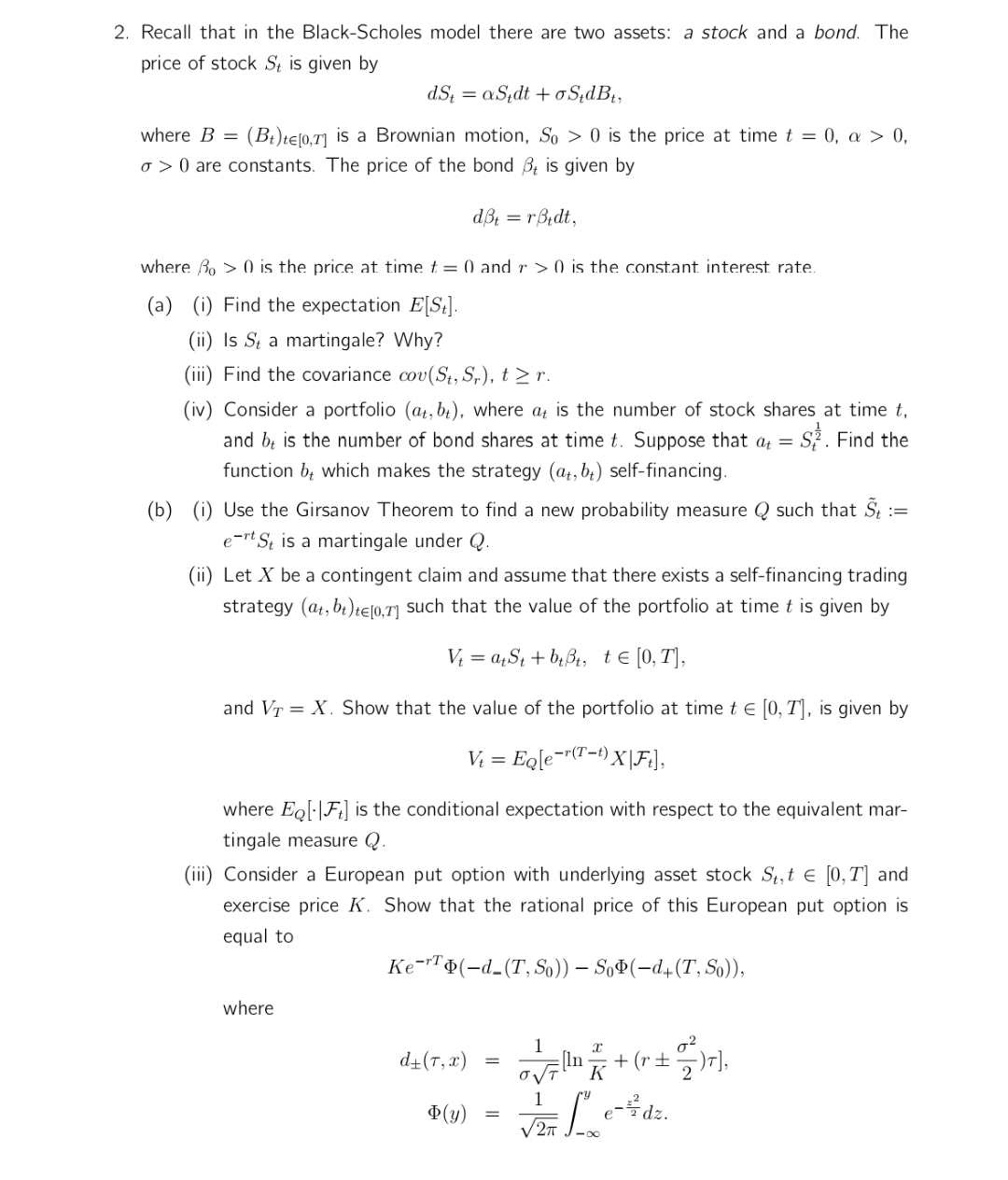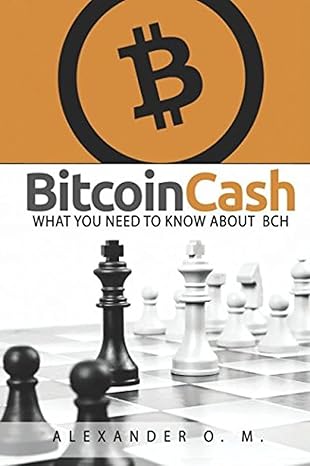Answered step by step
Verified Expert Solution
Question
1 Approved Answer
black-schores model problem considering two assets, a bond and a stock. 2. Recall that in the Black-Scholes model there are two assets: a stock and
black-schores model problem considering two assets, a bond and a stock.

2. Recall that in the Black-Scholes model there are two assets: a stock and a bond. The price of stock St is given by dSt = a Sydt + o SidBt, where B (Bt)te[0,7) is a Brownian motion, So > 0 is the price at time t = 0, a > 0, 0 >0 are constants. The price of the bond Bt is given by dBt = r Bidt, where Bo > 0 is the price at time t= 0 and r >O is the constant interest rate. (a) (i) Find the expectation E[St]. (ii) Is St a martingale? Why? (iii) Find the covariance cov(St, Sy), t>r. (iv) Consider a portfolio (at, bt), where at is the number of stock shares at time t, and bt is the number of bond shares at time t. Suppose that at = SZ. Find the function by which makes the strategy (at, bt) self-financing. (b) (i) Use the Girsanov Theorem to find a new probability measure Q such that : eart St is a martingale under Q. (ii) Let X be a contingent claim and assume that there exists a self-financing trading strategy (at,b+)te[0,1] such that the value of the portfolio at time t is given by V4 = 24St + Bt, t (0,T], and V1 = X. Show that the value of the portfolio at time t [0, T], is given by Vi= Eq[e=r(T-1) X|Ft], where Eq[|Ft] is the conditional expectation with respect to the equivalent mar- tingale measure Q. (iii) Consider a European put option with underlying asset stock St,t e [0, T] and exercise price K. Show that the rational price of this European put option is equal to Ke-rT\(-d-(T, S.)) S0(-d+(T, So)), where 1 d+(T,x) zlin +(r+ =)=), v 1 (y) dz. 2. Recall that in the Black-Scholes model there are two assets: a stock and a bond. The price of stock St is given by dSt = a Sydt + o SidBt, where B (Bt)te[0,7) is a Brownian motion, So > 0 is the price at time t = 0, a > 0, 0 >0 are constants. The price of the bond Bt is given by dBt = r Bidt, where Bo > 0 is the price at time t= 0 and r >O is the constant interest rate. (a) (i) Find the expectation E[St]. (ii) Is St a martingale? Why? (iii) Find the covariance cov(St, Sy), t>r. (iv) Consider a portfolio (at, bt), where at is the number of stock shares at time t, and bt is the number of bond shares at time t. Suppose that at = SZ. Find the function by which makes the strategy (at, bt) self-financing. (b) (i) Use the Girsanov Theorem to find a new probability measure Q such that : eart St is a martingale under Q. (ii) Let X be a contingent claim and assume that there exists a self-financing trading strategy (at,b+)te[0,1] such that the value of the portfolio at time t is given by V4 = 24St + Bt, t (0,T], and V1 = X. Show that the value of the portfolio at time t [0, T], is given by Vi= Eq[e=r(T-1) X|Ft], where Eq[|Ft] is the conditional expectation with respect to the equivalent mar- tingale measure Q. (iii) Consider a European put option with underlying asset stock St,t e [0, T] and exercise price K. Show that the rational price of this European put option is equal to Ke-rT\(-d-(T, S.)) S0(-d+(T, So)), where 1 d+(T,x) zlin +(r+ =)=), v 1 (y) dz
Step by Step Solution
There are 3 Steps involved in it
Step: 1

Get Instant Access to Expert-Tailored Solutions
See step-by-step solutions with expert insights and AI powered tools for academic success
Step: 2

Step: 3

Ace Your Homework with AI
Get the answers you need in no time with our AI-driven, step-by-step assistance
Get Started


